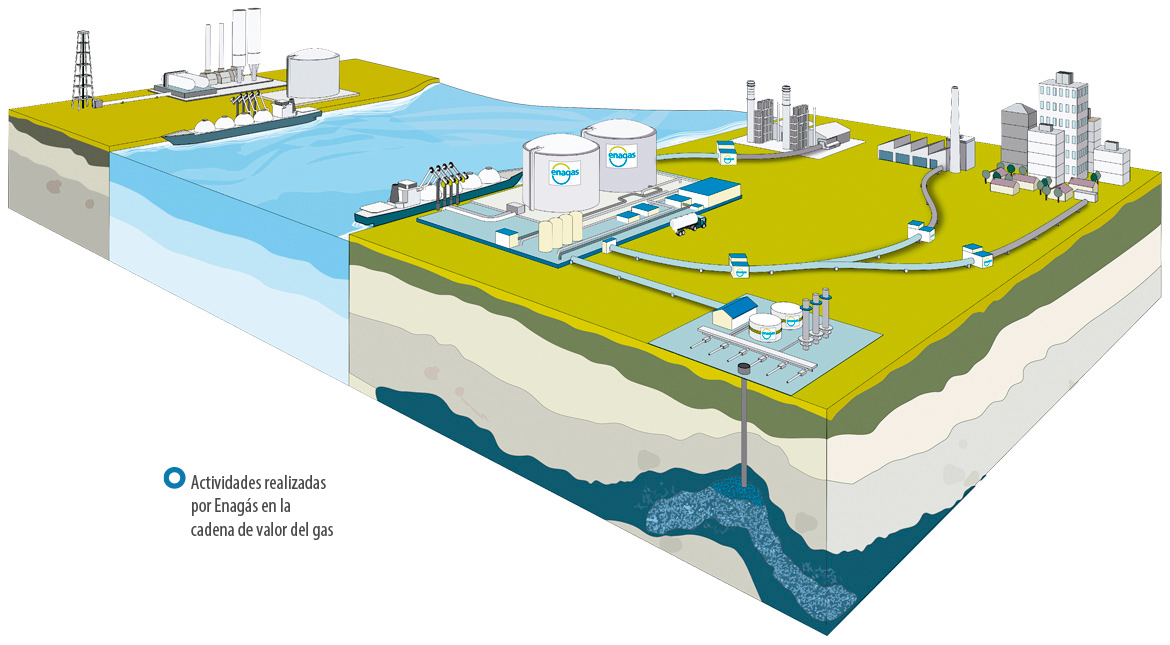Liquefied natural gas (LNG) is natural gas that has been processed to be transported in liquid form. One of the great advantages of liquefying natural gas – which is originally in a gaseous state – is that it reduces its volume by 600 times, but its mass (kg) remains constant. In other words, 1 m³ of LNG is equal to 600 m³ of natural gas. Therefore, LNG can easily be transported on ships or in tankers because it takes up less space.
But how does gaseous natural gas become liquid, i.e. LNG?
The main component of natural gas is methane, which has a boiling point at atmospheric pressure close to -160ºC. Therefore, its liquefaction is achieved by cooling the natural gas to that temperature at atmospheric pressure. This process is carried out in liquefaction plants in countries producing natural gas. There, it is liquefied and loaded into methane tankers bound for the various countries where its consumption is planned, such as Spain. Our country, which has received 69% so far in 2020 of its gas in the form of LNG, has seven regasification plants where this LNG is received and returned to its gaseous state for subsequent injection into the network. Also in the form of LNG, the gas can be loaded into tankers or even reloaded on other vessels for re-export.

Natural gas is one of the energies with the lowest environmental impact and is key to the development of more sustainable mobility in all forms of transport.
LNG can be used for almost any type of mobility, such as land, rail and sea. As a fuel, it reduces nitrogen oxide (NOx) emissions by 70% and eliminates almost 100% of sulphur oxide (SOx) and particle emissions, while also reducing CO2 emissions by 20-30%.
To promote LNG as a fuel, mainly at sea, Enagás is coordinating the CORE LNGas hive project, which is spearheaded by Puertos del Estado and co-financed by the European Commission and promoted by 42 partners (21 public and 21 private). In addition, its development will be possible thanks to the projects of the LNGhive2 institutional strategy for deployment of the LNG bunkering market, which is also promoted by Puertos del Estado.